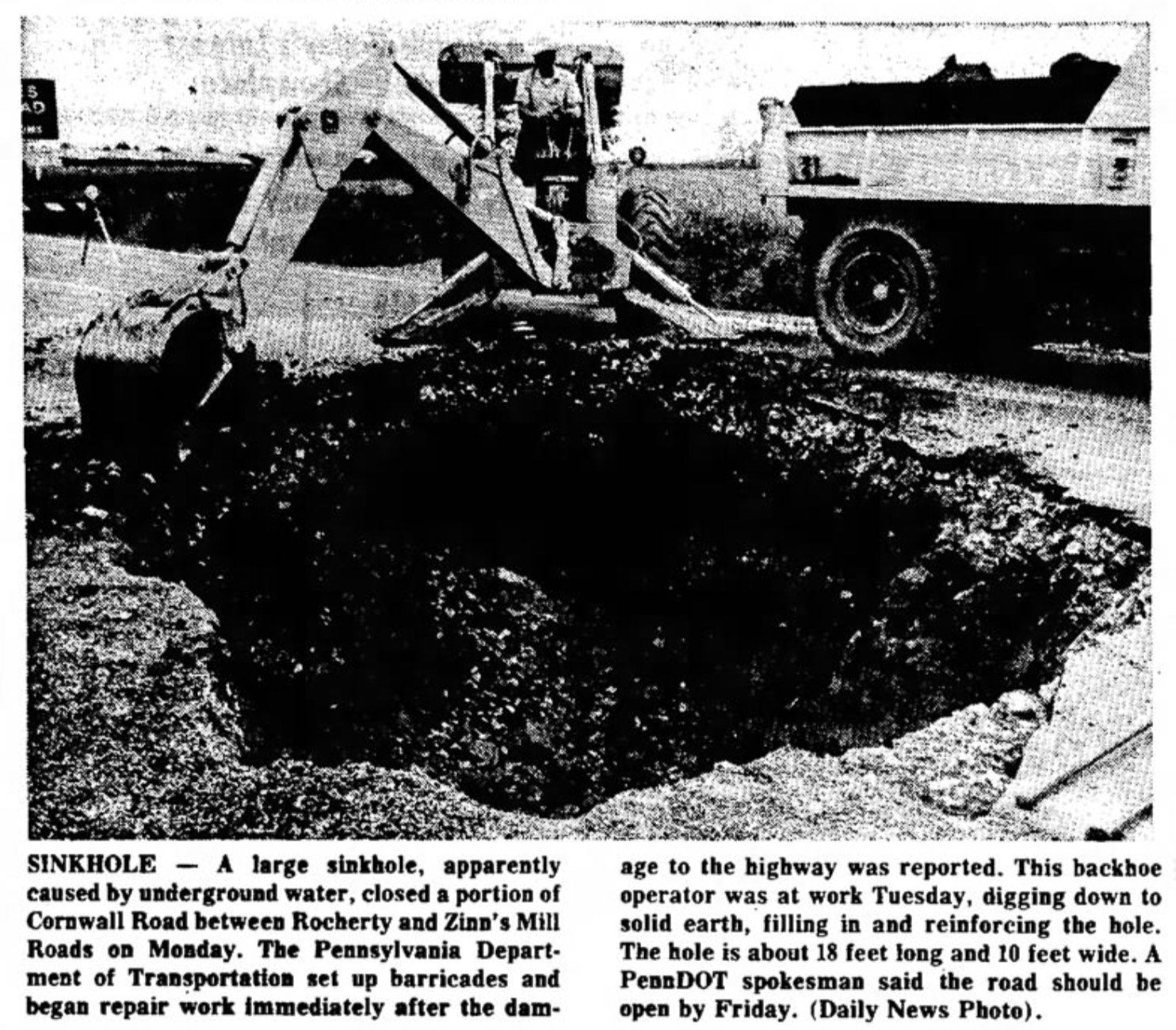Growing up in Lebanon, one might think every American family faces seasonal basement floods and the occasional neighborhood sinkhole.
But just a fifth of the US’s land is susceptible to “sinkhole” phenomenon, according to the US Geographical Survey, with the majority in Pennsylvania, Florida, Texas, Alabama, Missouri, Kentucky, and Tennessee.
Technically speaking, sinkholes are depressions in the ground that result from surface material moving into subsurface pathways caused by weathering. Sinkholes can be formed gradually or with abrupt breaks in the soil.
Central Pennsylvania’s landscape sitting atop limestone or dolomite rock makes the region susceptible to sinkholes due to the dissolution of soluble rock.

Although the resulting springs, caves, and sinkholes may be fantastic to look at, they do correspond with a higher tendency towards aquifer contamination. Some believe this makes projects like the Mariner East II even more dangerous to our local water supply.

Although sinkholes are merely a nuisance today, they could be much larger inconveniences when falling along, say, a railroad line. In September 1876, the Lebanon Daily News reported about a sinkhole in Robesonia caused by a hidden stream that was threatening the Philadelphia and Reading Railroad which linked Lebanon to the cities east. The “yawning abyss” was managed by redirecting the water with a man-made shaft.
Here are some other sinkholes that have made the local news over the years.





Find more information about sinkholes in Pennsylvania over at the state’s Department of Conservation and Natural Resources.


































